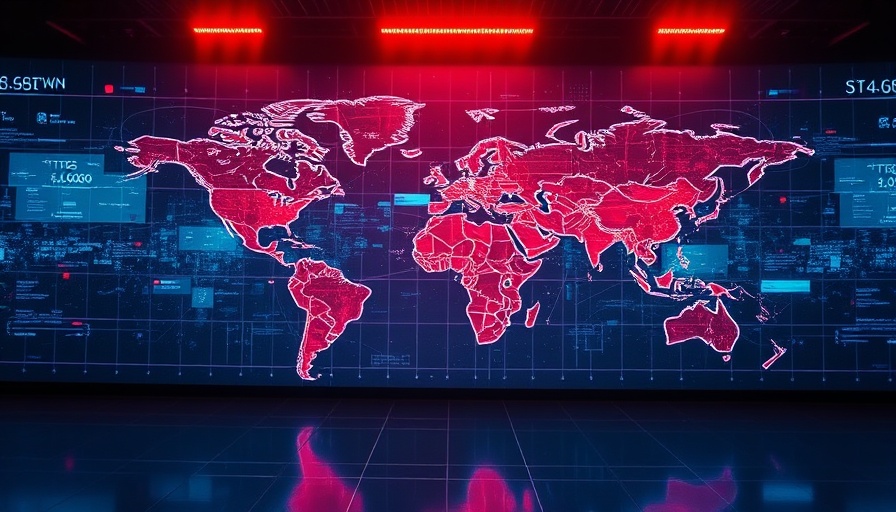
Revolutionizing AI: The Rise of Claude 3.7 and Grok 3
The landscape of artificial intelligence has shifted dramatically with the introduction of Claude 3.7 and Grok 3, two models that not only showcase advanced capabilities but also redefine standards in the AI world. As AI technology continues to evolve, these new entrants illustrate a significant leap in computing power and functionality compared to their predecessors.
What Sets Claude 3.7 and Grok 3 Apart?
Claude 3.7 stands out as the most intelligent model released by Anthropic to date, integrating a hybrid reasoning approach. This means it can deliver instant responses while also engaging in detailed, step-wise problem-solving—even visualizing complex systems in 3D during discussions. Grok 3, on the other hand, showcases an unprecedented amount of computational power, trained with ten times more data processing capabilities than models like GPT-4.
This shift towards increased learning capability is indicative of a broader trend in AI development aiming for models that can handle complex tasks more effectively. Both models demonstrate enhanced coding abilities, setting new benchmarks in the development community— Claude enables users to generate functional programs through simple natural language prompts, eliminating the need for traditional programming skills.
Historical Context and Background
The emergence of Claude 3.7 and Grok 3 comes after a period of rapid competition among AI models. Previously, Anthropic faced pressure from industry competitors like OpenAI and DeepSeek, which have launched powerful updates in their models. Claude 3.7 not only catches up but strives to leapfrog the competition by addressing user feedback directly and focusing on practical utility over niche academic excellence.
Real-World Applications and Powerful Reasoning Capabilities
Anthropic's Claude 3.7 Sonnet can perform real-world tasks with accuracy that was previously unattainable in AI. In early tests, the model demonstrated impressive speed, processing extensive inputs with remarkable efficiency thanks to its hybrid reasoning structure. Instead of juggling separate AI models for different types of queries, users benefit from a unified interface that can switch between quick replies and in-depth analyses effortlessly.
The capabilities of Grok 3 also deserve mention, particularly its real-time data integration and quick learning from vast streams of information. Such features elevate Grok 3 into the domain of not just answering queries but adapting to the competitive landscape of misinformation prevalent across various platforms.
Future Predictions: Where Are We Headed?
The introduction of Claude 3.7 and Grok 3 signals a promising trajectory for AI innovation. Experts project that models will become increasingly adept at not just generating text but also seamlessly integrating reasoning across various formats, including voice and vision. As performance continues to improve, the potential for AI to operate autonomously in complex environments becomes ever more plausible. Companies like Anthropic are positioning themselves as leaders in this evolution, promising even greater functional capabilities in their future iterations.
Practical Insights: How to Maximize AI Usage
Users and developers alike can optimize their interactions with these advanced AI models by understanding their unique abilities. For instance, Claude’s ability to visualize project proposals can inspire innovative approaches in education and business planning. Similarly, Grok 3 enables insight-driven discussions by integrating user feedback in real time, allowing for a collaborative approach to information gathering.
Emotional and Human Interest Angles
Advancements in AI are not just a technological milestone but a sociocultural shift that affects how we communicate and solve problems. As users engage with Claude 3.7 and Grok 3, feelings of awe and apprehension may arise due to the humanlike capabilities of these models. The potential of AI to augment human intelligence and support decision-making processes opens exciting avenues, as well as ethical considerations about reliance on such advanced tools.
Conclusion: Embrace the Future of AI
The advancements represented by Claude 3.7 and Grok 3 are indicative of a new chapter in AI technology. As these models become commonplace in various sectors—from education to business—enhancements in performance and usability will continue to expand the horizons of what is possible with AI. Adopting these technologies now could position users at the forefront of a revolutionary transformation in how tasks are approached and solved.
 Add Row
Add Row  Add
Add 


 Add Row
Add Row  Add
Add 

Write A Comment